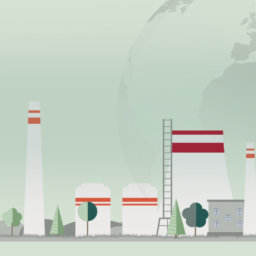India is the fastest developing nation in the world, with its GDP growth surpassing that of China’s. India’s accelerated growth took speed under the new leadership of Prime Minister Narendra Modi in 2014. He implemented state-led, growth-oriented and protectionist economic policies that resulted in consecutive years of GDP growth over 7 percent.

Prime Minister Modi revamped India’s economy with his “Make in India” initiative. (Source: LinkedIn)
Most notably, Prime Minister Modi launched the “Make in India” initiative in September 2014, showing his resolve to revamp the manufacturing industry in India. Under the initiative, domestic as well as foreign companies are encouraged to manufacture their goods in India with the goal of increasing the makeup of the manufacturing industry to 25 percent of GDP by 2025.
At the heart of the initiative is the government’s efforts to ignite the steel industry. The National Steel Policy (NSP) 2017 declared that India will become self-sufficient on domestic steel supplies by increasing its steel production capacity from 122 Mt in 2015 to 300 Mt in 2030. However, the steel industry currently only makes up 1.04 percent of the country’s GDP.
Challenges Ahead for India’s Steel Industry
Despite India’s promising potential and robust government support, the steel industry has not met the government’s high expectations and growth has been modest. According to researchers in volume 4 of the Asian Steel Watch, there are deep structural flaws within India’s steel industry that need to be addressed before the country can reach its full potential.
One of the industry’s biggest challenges is its growing debt – In 2016, the steel industry surpassed INR 3 trillion in debt. Most of the country’s steel and infrastructure projects are financed by the government. What India needs is more private sector involvement, but private players are hesitant due to complex regulations, a lack of business models and no guarantee on returns on investment (ROI). The government has also been slow to secure FDI because, over the years, India’s steel industry has displayed poor planning and management of projects as well as a mismanagement of funds.

India’s mining industry will directly affect the success of the steel industry. (Source: Pinterest)
Another major challenge has to do with India’s natural resource management, as mining companies do not have fair access to the country’s abundant resources. The mining industry is subject to heavy tax burdens including the royalty, local area development tax, forest development tax and much more as it is a profitable business for the government. Plus, the costs of meeting international environmental standards are passed directly onto mining companies. Thus, the price of iron ore and other minerals do not reflect the abundant supplies available, and the higher prices ripple into the steel industry.
Moreover, the government regards the steel industry as the backbone of India’s economy, but in reality, the times are changing.

Technological advances in the manufacturing industry is making the steel production process more efficient and less labor intensive. (Source: South China Morning Post)
In the past, 70,000 workers were required to produce 1.5 Mt of steel. Today, it takes about 3,000-4,000 workers to make 5 Mt a year. The steel industry is just not what it used to be in terms of the positive effects it had on the economy as a whole. The industry requires intensive capital and the only way it will survive is with low labor costs and maximum manpower productivity.
India needs to take full advantage of the country’s abundant resources and capitalize on its competitiveness to reach its full potential. In order to do so, India can start by examining other steel industries that served as the main driver for national economic growth, such as Korea’s.
Takeaways from Korea
After the Korean war in 1953, Korea had to build its economy up from scratch. Like India, the government chose to stimulate its steel industry and spent its war reparations payment from Japan to build POSCO’s steel mill in 1969. Since then, the state-led steelmaker has been a primary engine for Korea’s miraculous economic growth.
So how did Korea manage such growth?
The government allocated much of its resources to infrastructure construction for efficient logistics and implemented policies to support the mutual growth of steel and steel-consuming industries. Moreover, the government practiced protectionist trade policies long enough to get Korea’s steel business on its feet, then supported a market-driven business model.
The government also kept a close watch on supply and demand forecasts and updated its supply policies timely and accordingly. Factors such as demographic changes, industrialization patterns, urbanization and labor costs should be examined holistically to prevent the gap between supply and demand from increasing too much. For example, in 2010, the Korean government implemented capacity expansion policies that resulted in oversupply and a prolonged recession. This was because policymakers failed to diagnose the symptoms of the mid to long-term steel demand forecasts that showed sluggish demand. Since then, Korean policymakers keep close watch on such measures to update the country’s supply policies.
Finally, the Korean steel industry invested heavily in knowledge accumulation and R&D to wean off of Japan’s technical support and become an exporter of steel technology.
Compared to Korea, India has an advantage in almost every aspect. The country’s per capita steel consumption is still low and the booming population will drive demand in steel-related industries. With much room for growth, the Indian steel industry can expect to see accelerated growth when paired with the right policies and government support.





